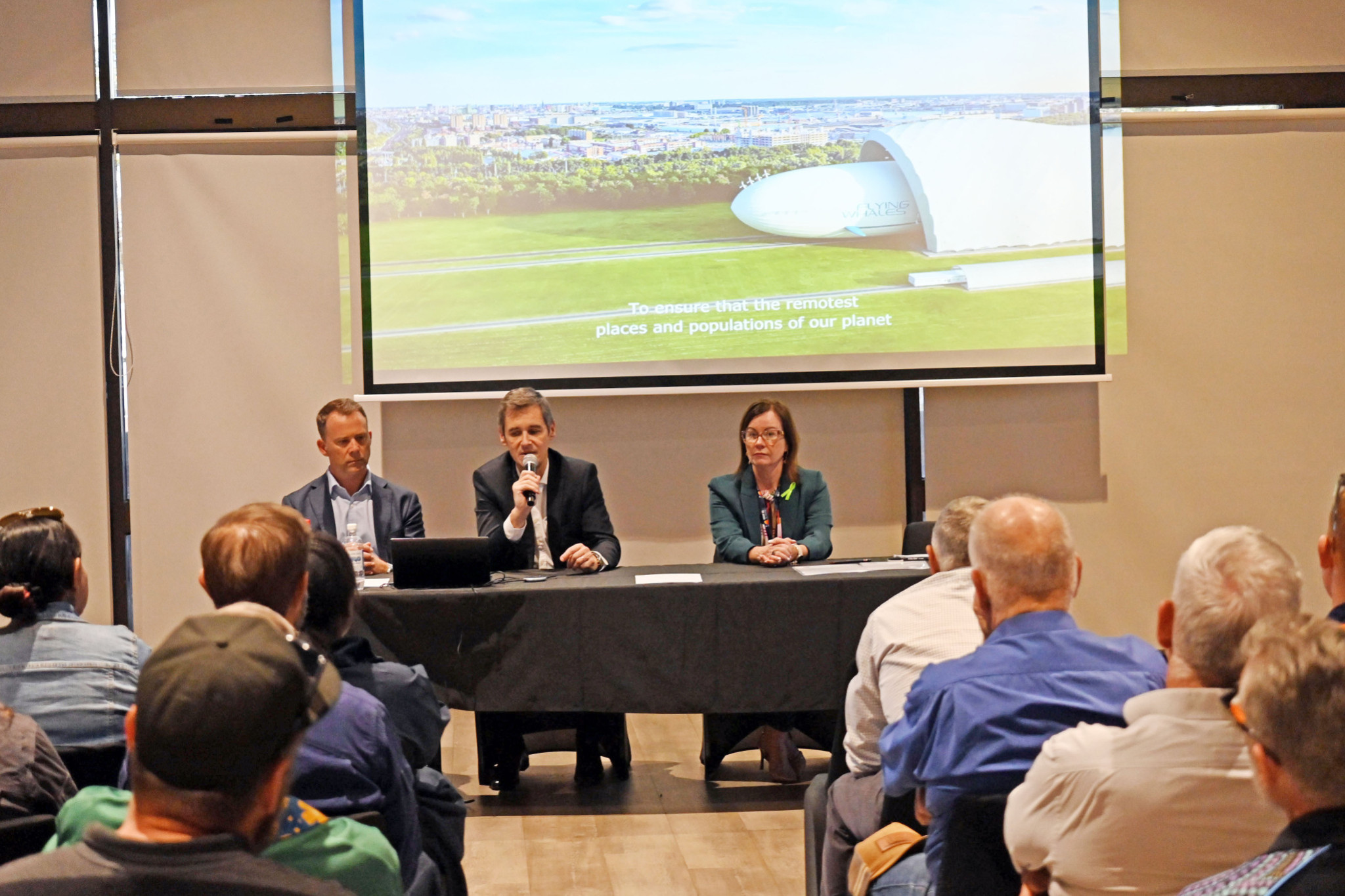Business
16 October, 2024
Flying Whales outlines big plans for Mount Isa base
Last week's announcement suggested the blimp-like aircraft could be seen in the skies as soon as 2028.

Flying Whales could loom on the North West horizon, with a French-Canadian consortium revealing ambitious plans to construct Australia’s first airship base in Mount Isa as soon as 2028.
Speaking to business and community leaders at the Civic Centre, Flying Whales founder and CEO Sébastien Bougon said Mount Isa was a prime location to house a fleet of blimp cargo ships that never land.
He said the ground-breaking aerospace project would become a net-zero cargo transportation option for heavy freight that would bypass road and rail networks.
With a combined cargo bay and under-sling carrying capacity of up to 60 tonnes, which is 12 times more than the largest-capacity helicopter, the Flying Whale proponents believe the fleet could be used to simplify the movement of cumbersome cargo, such as huge wind turbines and mining vehicles, shipping containers between cargo boats and even field hospitals during natural disaster events.
At about 200 metres long –which is almost three times the length of an A-380 Airbus – the Flying Whale would be the largest air vehicle in the world.
The concept of blimp airships immediately brings forth images of the infamous 1937 Hindenburg disaster – however, Mr Bougon was quick to dispel this comparison, saying the Flying Whales operate on non-flammable helium.
Under the proposal, which is still seeking regulatory approval from CASA and financial support from the state and federal government, Australia would be one of three transport hubs for the international deployment of the network of airships.

There would be 160 bases across the globe, with France being the central point to service Europe and Africa, Canada the central point to service the Americas and Australia focused on the Asia Pacific.
Mr Bougon said the Mount Isa base would be among six in Australia and a further 40 proposed for the Asia-Pacific network.
He said an airship manufacturing facility would likely be located in Ballarat, although North West Weekly understands that could be moved to Toowoomba, with a decision yet to be made public.
Beginning as a start-up in 2012, Mr Bougon said the ambitious effort to establish the international network would include the initial local milestones of conducting the first test flights in 2026 and opening the Mount Isa base by 2028.
“We are developing not only a transportation means but also developing transportation infrastructure – all the bases – it’s as if you were not only creating the plane but also all the airports at the same time – it is a lot, and we have to do that within the next 10-15 years,” Mr Bougon said.
It is expected the local airbase would generate 800 construction jobs and about 100 ongoing jobs.
The Mount Isa base is slated to be among a raft of projects to be located at the proposed Australian Critical Minerals Industrial Precinct (ACMIP), which is planned for construction between the airport and George Fisher Mine.
The ACMIP project, which forms a central pillar in Mount Isa City Council’s recent economic diversification strategy, took a significant step forward with Glencore last week providing in-principal support to release land on its lease for its construction.
Mr Bougon said he was confident Flying Whales would receive all Australian regulatory approvals because the project had already seen positive signs from the European Union Aviation Safety Authority and the 50 partner consortium supporting the airship construction and network included some of the biggest aerospace companies in the world.
“The aviation agencies work hand in hand and those agencies have a respectful trust between each other – so as soon as the project moves forward in one area – there is no reason why there would be any problem,” he said.
Mr Bougon said the first decade of operations would be manned aircraft, which would eventually be replaced by unmanned drone technology.
READ ALSO: Mount Isa's eagerness for project helped bid